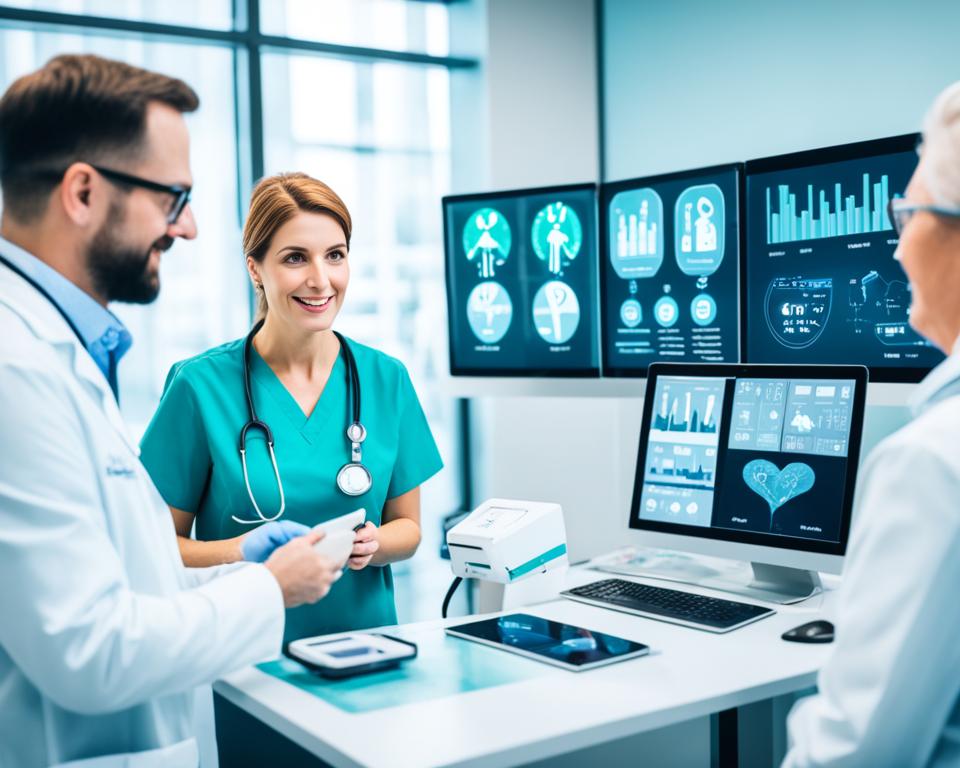Adverts
A Internet of Things (IoT) is causing a technological revolution that is transforming several aspects of our everyday lives. IoT connects smart devices, allowing the information exchange and the Remote Control. In this article, we will explore how IoT is impacting our daily routine and how connected devices are revolutionizing the way we live.
Adverts
Key findings:
- O impact of IoT it is visible in many areas of everyday life, from home automation to healthcare.
- IoT provides comfort, security It is energy efficiency in our homes through connected devices.
- In smart cities, IoT improves transportation, quality of life and the energy efficiency.
- The healthcare sector benefits from IoT through remote monitoring It is operational efficiency.
- A regulation and the data protection they are challenges that must be addressed to guarantee an ethical and responsible IoT.
The presence of IoT in our homes
IoT is increasingly present in our homes, providing greater comfort, security It is energy efficiency. Nowadays, we can control various home appliances through connected devices, such as smartphones and virtual assistants.
With a simple touch on your smartphone, you can adjust the air conditioning temperature, activate the automated curtains and control other devices. This facility provides greater comfort, allowing you to customize the environment according to your preferences.
IoT also plays an important role in security residential. With connected surveillance cameras and sensors, you can monitor your home even when you are away. Receive real-time notifications about possible intrusions, ensuring peace of mind regarding the security of your home.
Adverts
Furthermore, IoT contributes to energy efficiency. With connected devices, it is possible to program the operation of household appliances and equipment, avoiding waste. For example, it is possible to remotely control the operation of the air conditioning and optimize energy consumption.
In short, the presence of IoT in our homes brings numerous advantages, such as personalized comfort, reinforced security and energy efficiency. With the adoption of connected devices, you can enjoy a smarter and more automated home, providing better quality of life.
IoT in smart cities
A Internet of Things (IoT) is playing a key role in transformation of cities in smart cities. Through the implementation of sensors and connected devices, it is possible to collect real-time data and improve the quality of life of citizens. Furthermore, IoT is driving advancements in areas such as smart transport and energy efficiency.
Sensors for smarter transport
One of the main aspects of a smart city is efficient transportation. With the use of IoT, sensors are being deployed on public roads to monitor traffic in real time. These sensors collect information about the flow of vehicles and are capable of adjusting traffic light times according to needs, enabling more efficient traffic flow and reducing congestion.
Furthermore, IoT is also being used to improve the public transport system. Sensors installed on buses and subways can provide real-time information about the location and capacity of vehicles, allowing users to plan their trips more efficiently and reduce waiting times.
Data analysis for a better quality of life
The collection of real-time data provided by IoT is also essential for improving the quality of life in smart cities. Using sensors, it is possible to monitor air quality, noise levels and energy consumption, allowing accurate analysis and more efficient decision-making.
“IoT enables the implementation of more efficient and sustainable public policies, aiming to create a healthier and more pleasant urban environment for citizens.”
Based on the data collected, it is possible to adopt measures to reduce pollution, improve air quality and control energy consumption, contributing to the creation of a more sustainable and healthy urban environment.
IoT in smart cities is revolutionizing the way we live, providing a significant improvement in citizens' quality of life. Thanks to sensors and the collection of real-time data, it is possible to have smarter and more efficient transport, as well as a more sustainable urban environment. IoT has the potential to transform cities into more connected, efficient and enjoyable places to live.
IoT in healthcare
IoT is transforming the healthcare industry, enabling remote monitoring of patients, the access to medical information in real time and the development of Innovative solutions.
Wearable devices, such as smartwatches and fitness bracelets, are examples of how IoT has been applied in healthcare. They can monitor heart rate, physical activity and sleep quality, sending relevant data to healthcare professionals. This enables more accurate monitoring of the patient's health status and helps in the early diagnosis of diseases.
IoT also contributes to operational efficiency of hospitals. Through the implementation of sensors, it is possible to constantly monitor medical equipment, optimize the scheduling of appointments and procedures, and improve the management of available resources.
Access to medical information in real time is another benefit that IoT brings to the sector. With the information exchange Quickly and securely, doctors and healthcare professionals can have access to medical records, test results and other essential information to provide appropriate treatment to the patient.
Furthermore, IoT also drives the development of Innovative solutions In the health area. Researchers and companies are exploring the integration of connected devices, artificial intelligence and data analytics to create systems and technologies that promote quality of life and facilitate the diagnosis and treatment of diseases.

| Benefits of IoT in healthcare | Innovative solutions |
|---|---|
| Remote monitoring of patients | Development of wearable devices |
| Access to medical information In real time | Integration of IoT, artificial intelligence and data analysis |
| Operational efficiency in hospitals | Sensor deployment and resource optimization |
Conclusion
IoT is revolutionizing the way we interact with the world around us, transforming our everyday lives. With innovation, efficiency and convenience, this technology impacts several sectors. However, like any technological advancement, IoT also faces challenges that need to be overcome.
Security, privacy and interoperability are issues that deserve special attention to ensure the full use of benefits of IoT. It is essential to establish appropriate regulations and promote awareness about the importance of data protection and the reliability of connected devices.
As we move towards an increasingly connected future, it is crucial that we explore the potential of IoT in an ethical and responsible way. With appropriate regulation and investment in solutions, we can maximize benefits of technology to improve our quality of life, drive innovation and create a more efficient and sustainable world. O connected future It is within our reach, and it is up to us to protect data and ensure that IoT is an ally for a promising future.
